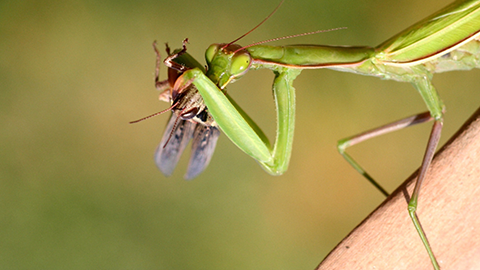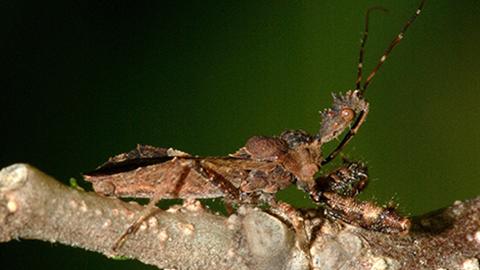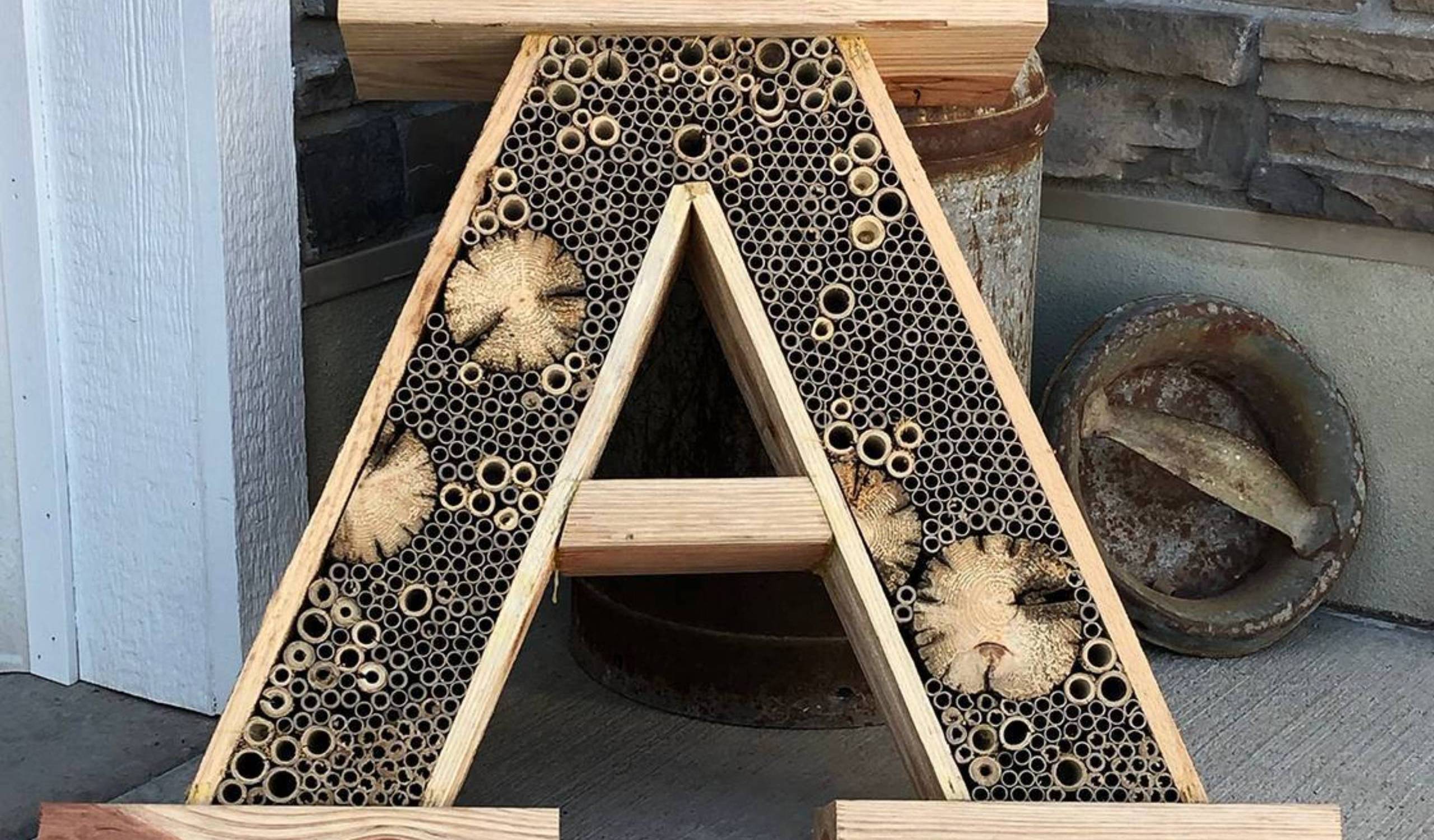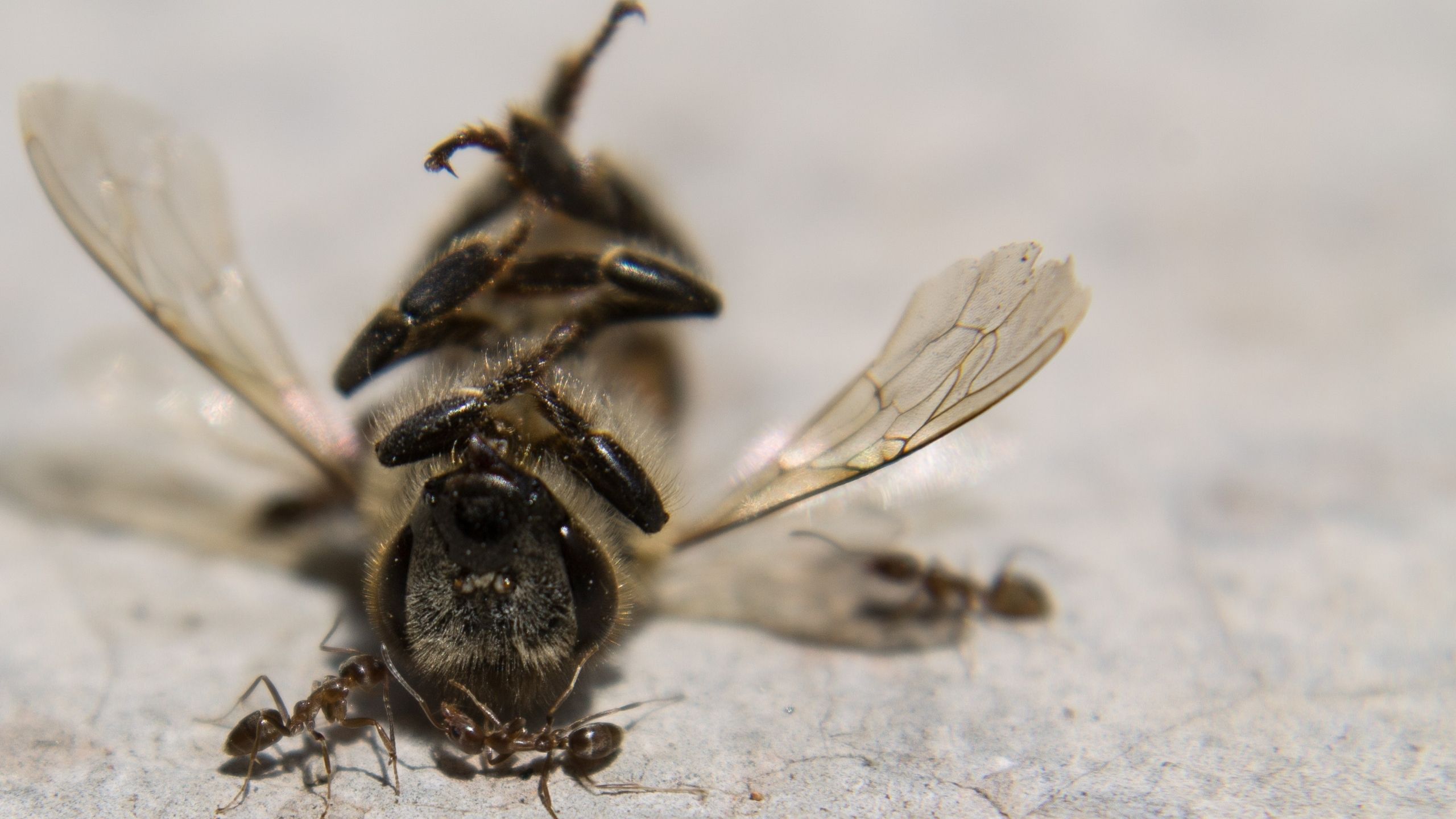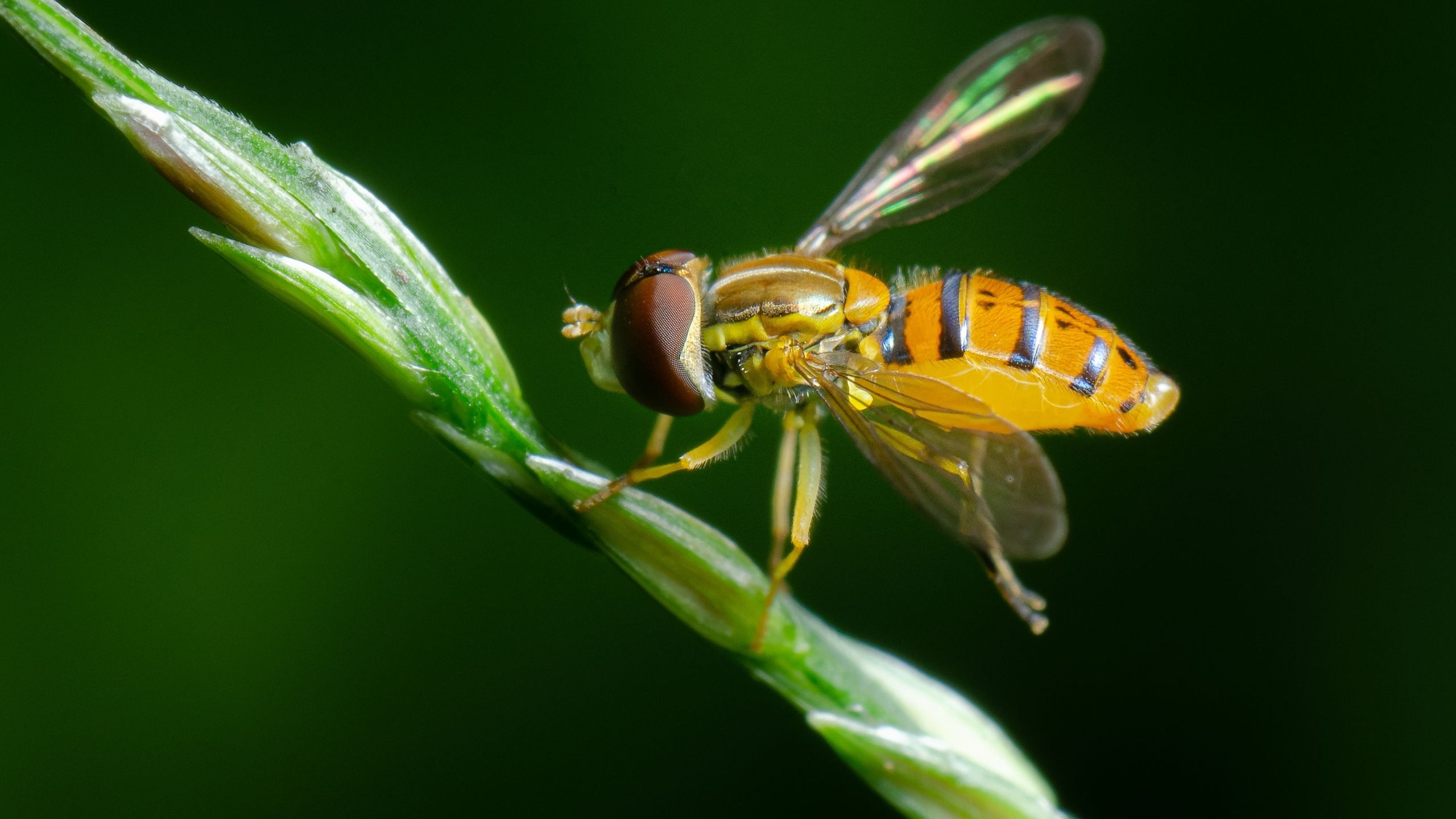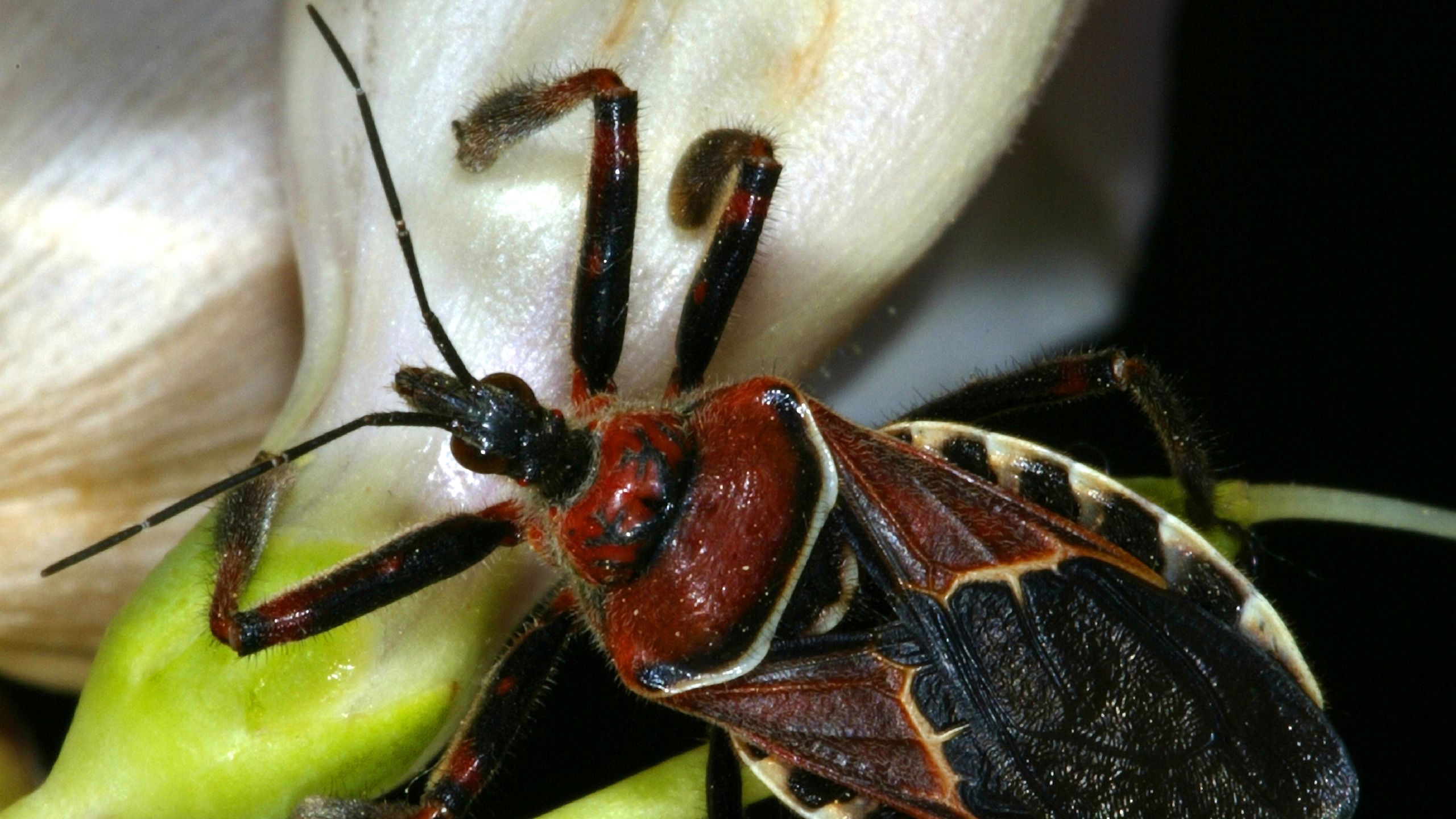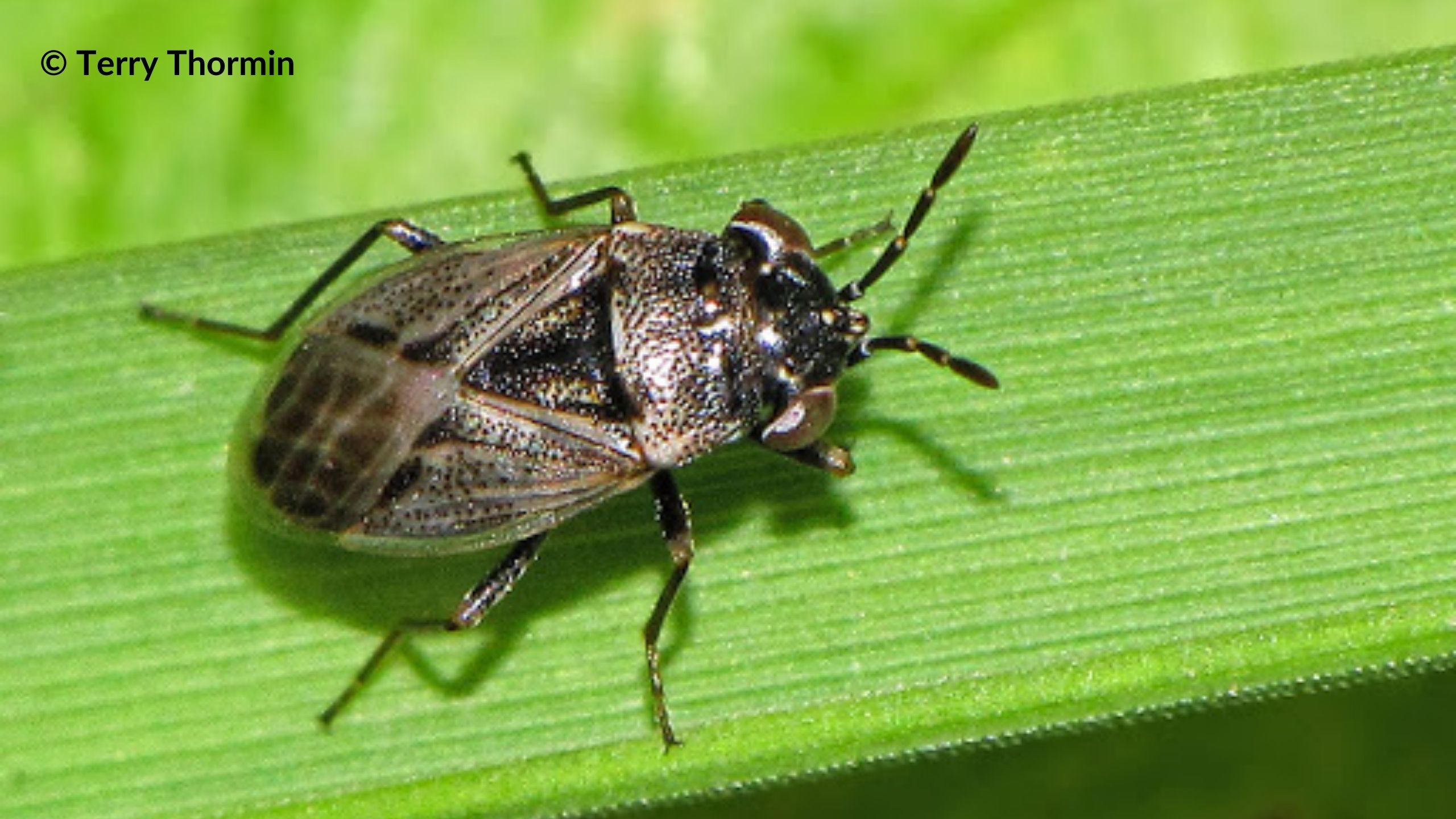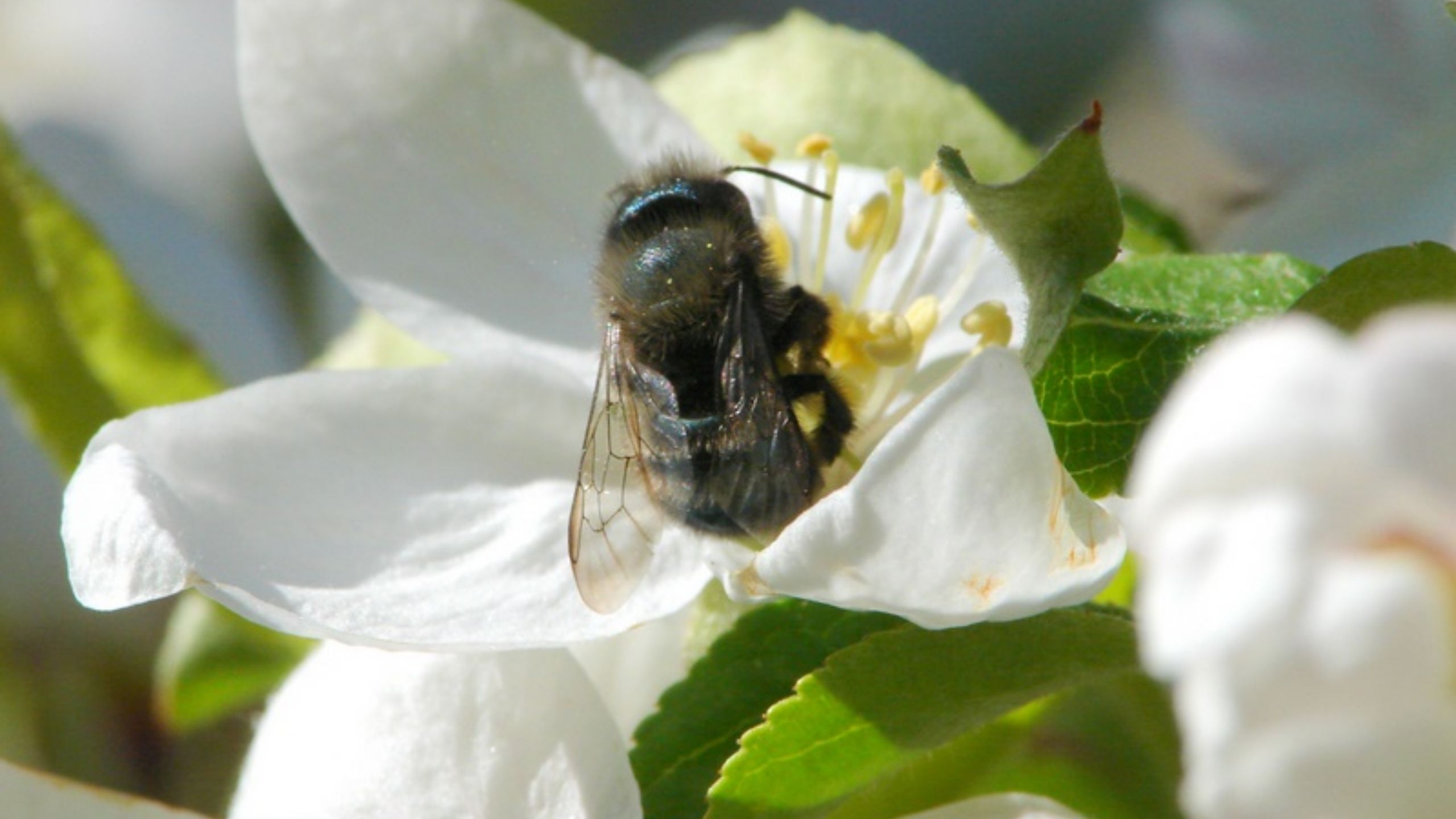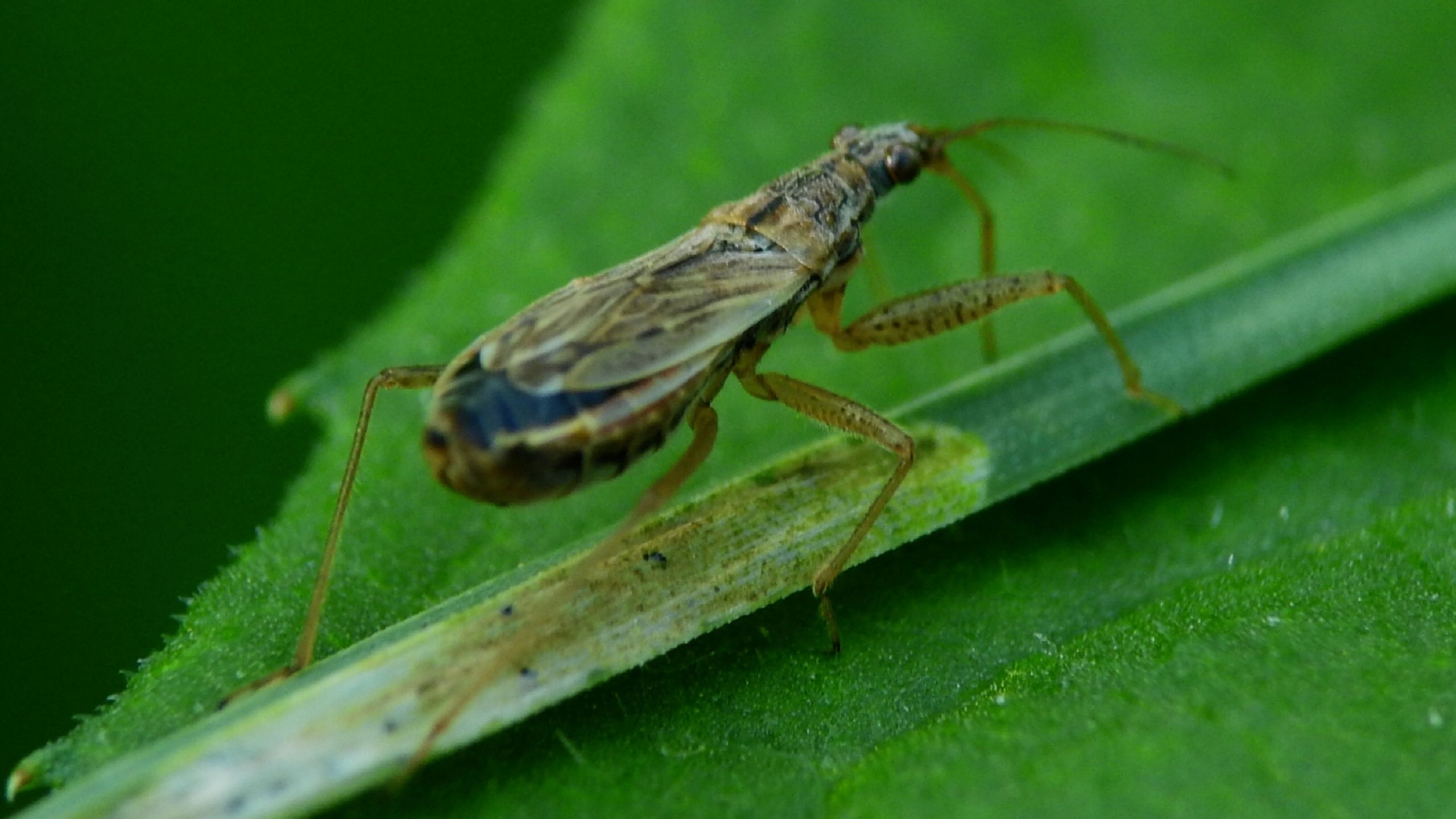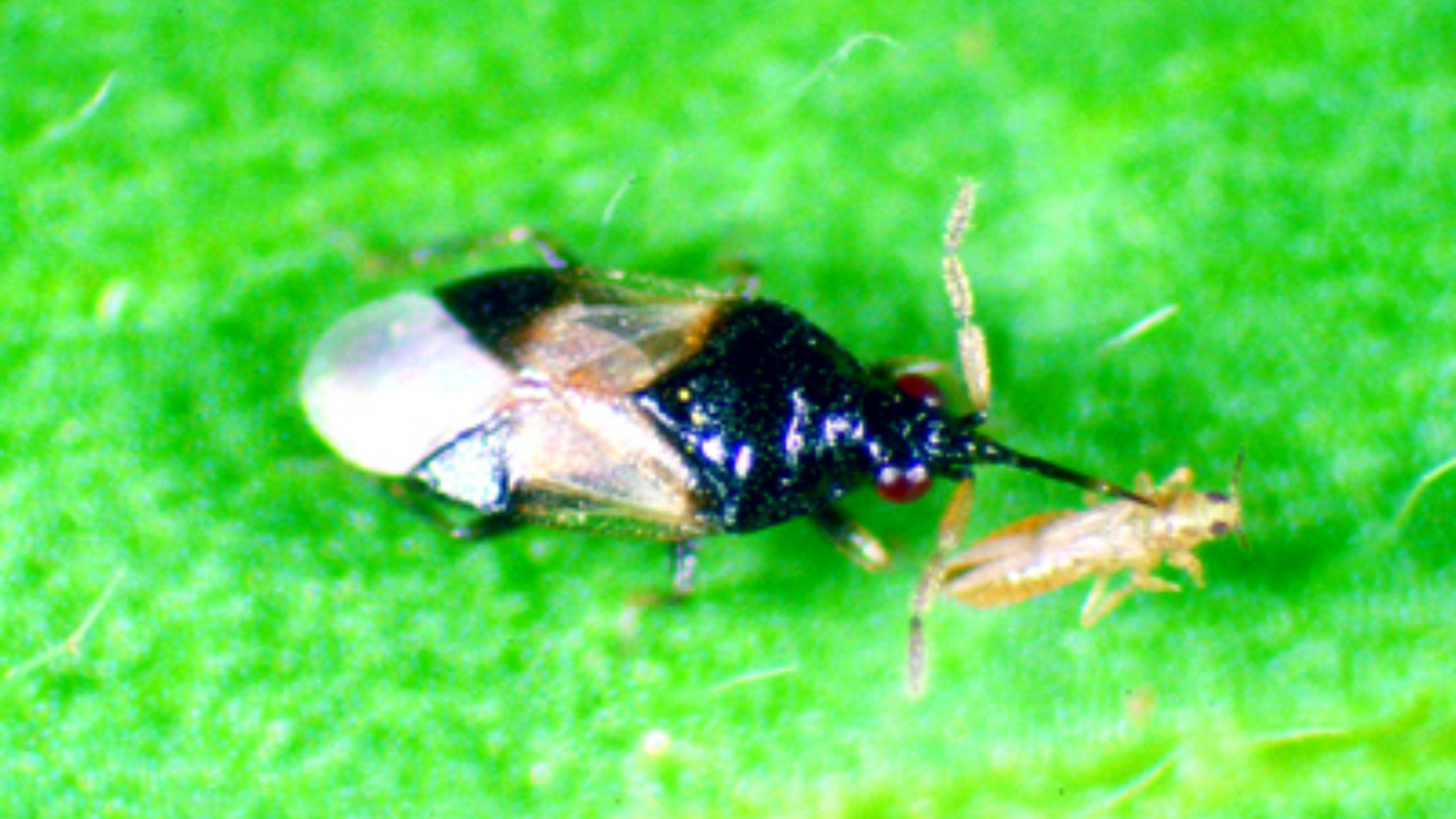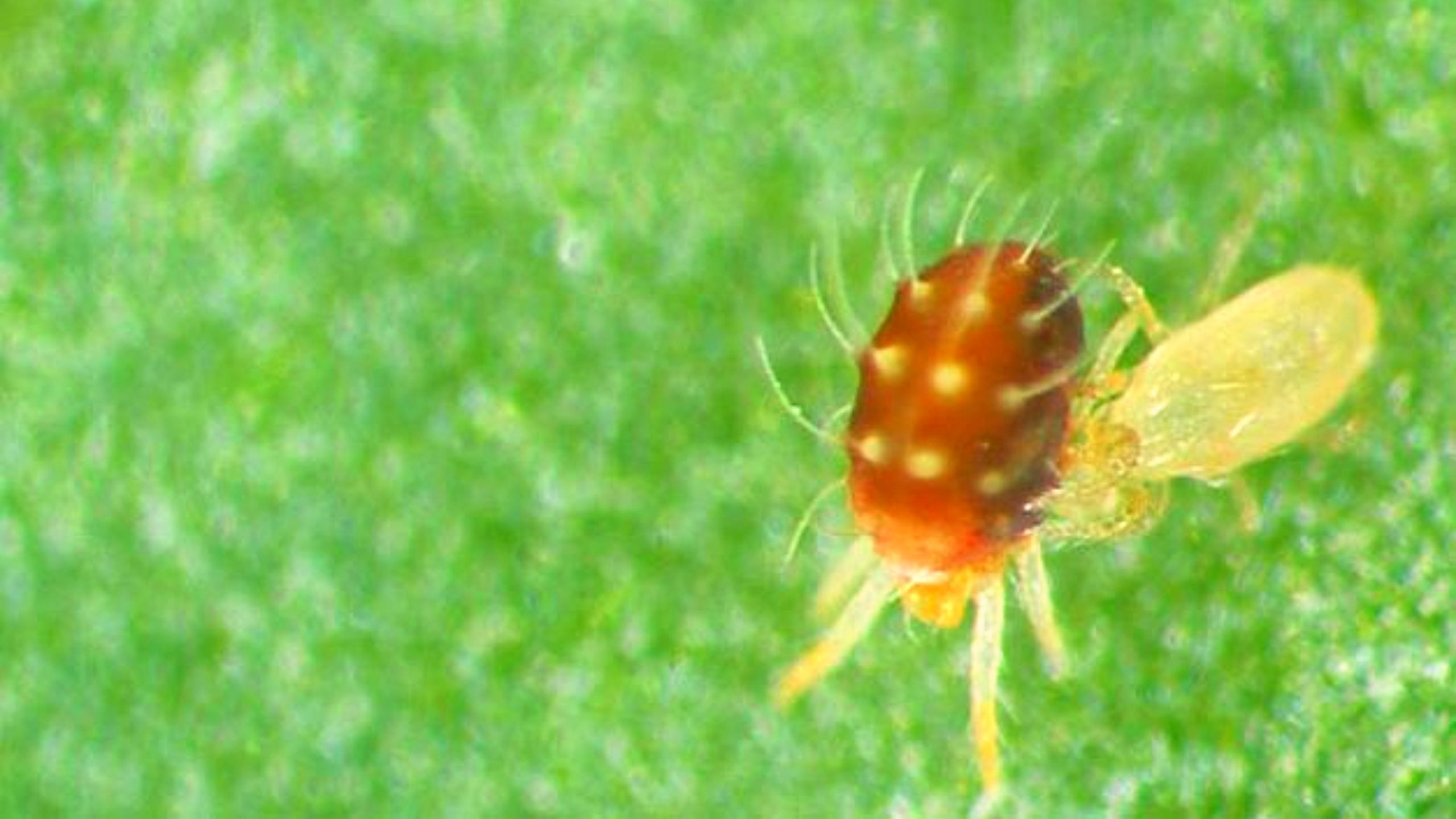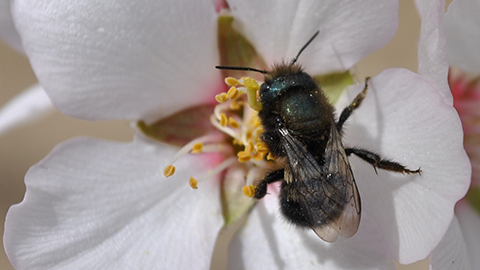Centipedes
June 2008
Erin W. Hodgson, Extension Entomology Specialist (No longer at USU) • Paul Bingham • Alan H. Roe, Insect Diagnostician (No longer at USU)
What You Should Know
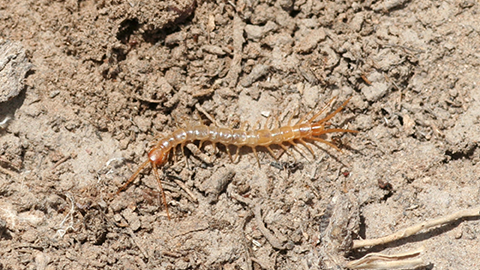
- Centipedes are predatory relatives of the insects, and are considered beneficial.
- Occasionally, centipedes enter homes and become a nuisance, but management options are available.
- Centipede bites on humans are rare.
Centipedes are long, slender arthropods in the class Chilopoda. Centipede means “hundred feet” because they appear to have many legs. Insects, millipedes and arachnids are close relatives. Centipedes should be considered beneficial because they are exclusively predatory. They eat a wide variety of smaller invertebrates, including insects. However, centipedes may be considered a nuisance to homeowners when they are found inside.
Life Cycle. Males deposit sperm packets, called spermatophores, to fertilize eggs. Females deposit 10 to 60 eggs in well hidden, moist areas including under soil or in decaying organic matter. In temperate areas, egg laying usually occurs during the spring and summer; however, in more tropical regions this occurs year round. Eggs hatch after 1 to 3 three months when immature centipedes emerge. Young centipedes grow and molt, or shed old skin, several times before reaching adulthood. Many North American centipede species hatch with incomplete number of legs and gain new legs after each molting. Some species, in contrast, hatch with a complete number of legs, just smaller in size than adults. Centipedes can live for several years; some species are known to live as long as 6 years.
Habitat. Centipedes like to be in secluded, damp, and cool places because they easily lose water. Outside they like to be under cool places including under rocks, leaves, rubbish, and in organic matter such as compost. Inside they are likely found in damp basements, cellars, bathrooms and anywhere else that is damp. Centipedes like to overwinter in these types of places. However, only the house centipede is known to remain inside year round.
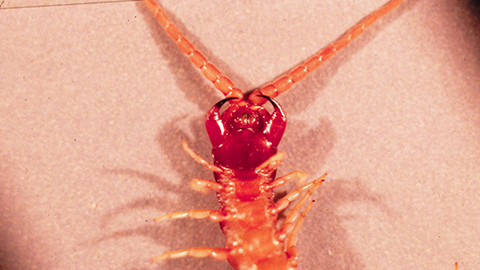
Description.Most adults are 1-2˝ long, but some can be up to 12˝ long in warm areas. Centipedes have characteristic body parts that distinguish them from other arthropods including elongated, segmented and flattened bodies (Fig. 1). Each segment supports one pair of legs, with most species having 15 or more segments. Centipedes have distinct mouthparts for eating. Most notably they have enlarged claws that are adapted from the first pair of legs (Fig. 2). These claws, called forcipules, contain a poison which is injected into prey to kill it. At the posterior end, centipedes have another specialized pair of legs that are elongated and capable of grabbing and holding prey while the forcipules inject the venom. Other identifying features include coloring. Centipedes are usually brown or grey in color, but exact coloring and markings vary among species. As well, they have two, highly segmented antennae (Fig. 2).
Medical Importance
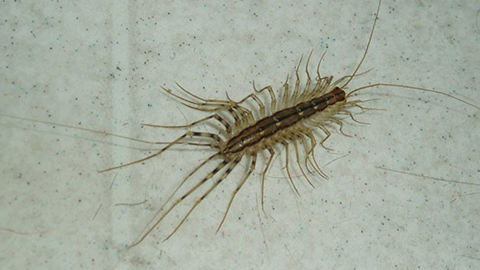
Centipedes are generalist predators, meaning they eat a wide variety of prey. They eat most anything that is small enough and soft bodied, which includes insects and other small animals. Because they eat almost any other small organism, including many common pests, centipedes are considered beneficial. However, many people consider them a nuisance because of their appearance and potential for bites. Centipedes are capable of biting humans, but this is generally of very little concern. Small centipedes are usually not able to penetrate skin, and bites from larger centipedes usually only cause minor irritation similar to mild bee stings. Centipede bite symptoms should subside within a few hours.
Detection and Management
Centipedes may be difficult to detect because they are usually present in low numbers, exhibit nocturnal behavior, and are highly mobile. Centipedes leave no traces such as feces, eggs or damage to home, furnishings, and plants. During the daytime, centipedes hide in crevices or cracks. Visual sightings are the best way to scout for centipedes. They are commonly found in dark, damp places in the garden and the home including under logs, grass clippings, leaves, in damp basements, bathrooms, or anywhere that is moist.
In the garden, centipedes should be encouraged because of their beneficial role. To prevent movement from the garden into the home, stones, mulch and other debris could be removed from the perimeter of the home, allowing the air and sun to dry the soil. Centipedes seldom need to be controlled unless they cause a nuisance in the home. Indoor centipede control may be warranted if outbreaks occur.
• Reducing household pests that centipedes eat will discourage their indoor survival.
• Eliminating places where centipedes live will also help. Dry out damp areas in the house (e.g., laundry room, furnace, bathroom, etc.), seal cracks in the foundation and repair any window/door gaps.
• Spots treatments pesticides should be considered a last resort for centipede control. Products registered in Utah for centipedes include: beta-cyfluthrin, bifenthrin, carbaryl, cypermethrin, esfenvalerate, imidacloprid, lambda-cyhalothrin, and permethrin.
The most problematic centipede in Utah is the house centipede, Scutigera coleoptrata. This species is 1-1½˝ long and has a yellow-grey body with three brown, longitudinal stripes on the top of its body (Fig. 3). The legs of the house centipede are very long and delicate compared to other centipedes and have dark bands encircling them. These legs give the house centipede its characteristic fast speed, which unnerves those who see it running in their homes. Unlike other centipedes, the house centipedes is the only known species that is able to survive completely within homes and buildings.
Related Research


